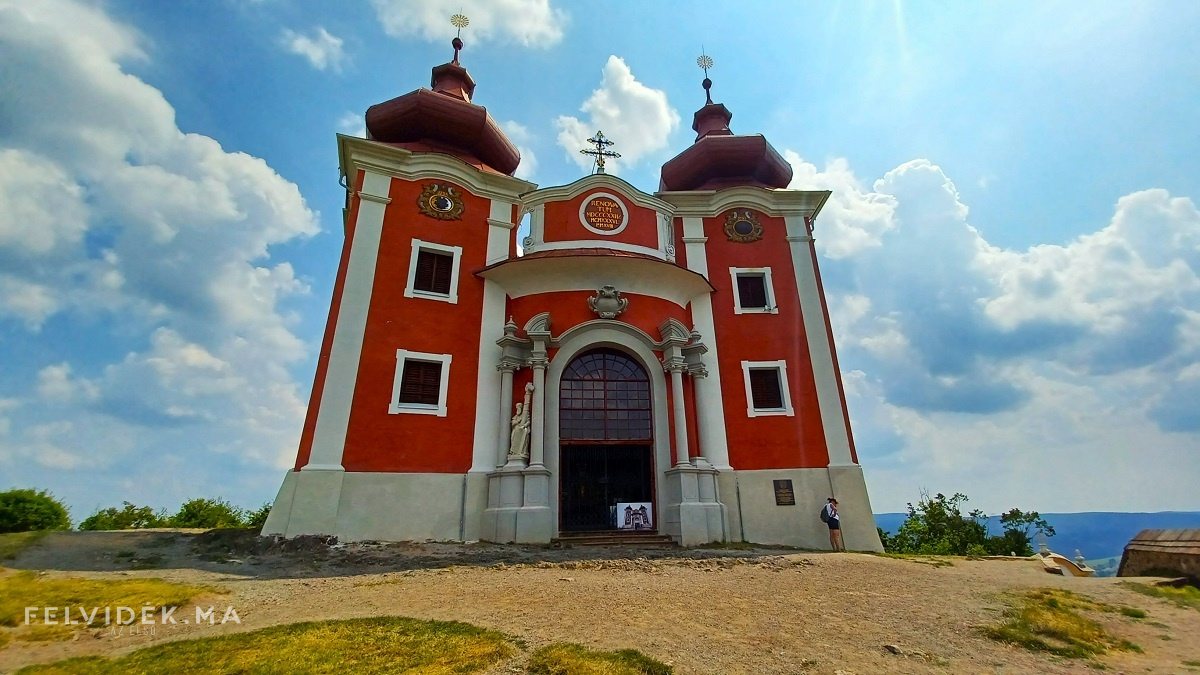Perhaps one of the most magnificent Golgothas rises in the highlands above Selmekbania. The mining town alone attracts a lot of tourists every year, and one of the most popular attractions in the town is the sacred place, which can be compared to a treasure chest.
Golgotha in Selmecbánya was built between 1744 and 1751 in Baroque style on top of the Scharfenberg mountain. The Holy Complex consists of nineteen chapels, two churches, the Holy Staircase, and a group of sculptures bearing the title of the Virgin Mary under the Cross. Golgotha is one of the city’s distinctive landscape elements.
The initiator of Golgotha in Selmekbania was the Jesuit Father Ferenc Berger. The locals adopted his initiative, and the mining town enjoyed its heyday at this time. Wealthy citizens, the Mining Directorate and the nobility supported this initiative. Miners participated in the construction.
Thanks to this, the dazzling architectural masterpiece, a magnificent architectural unit, was completed.
The donors’ coats of arms can still be seen on the facades of individual chapels.
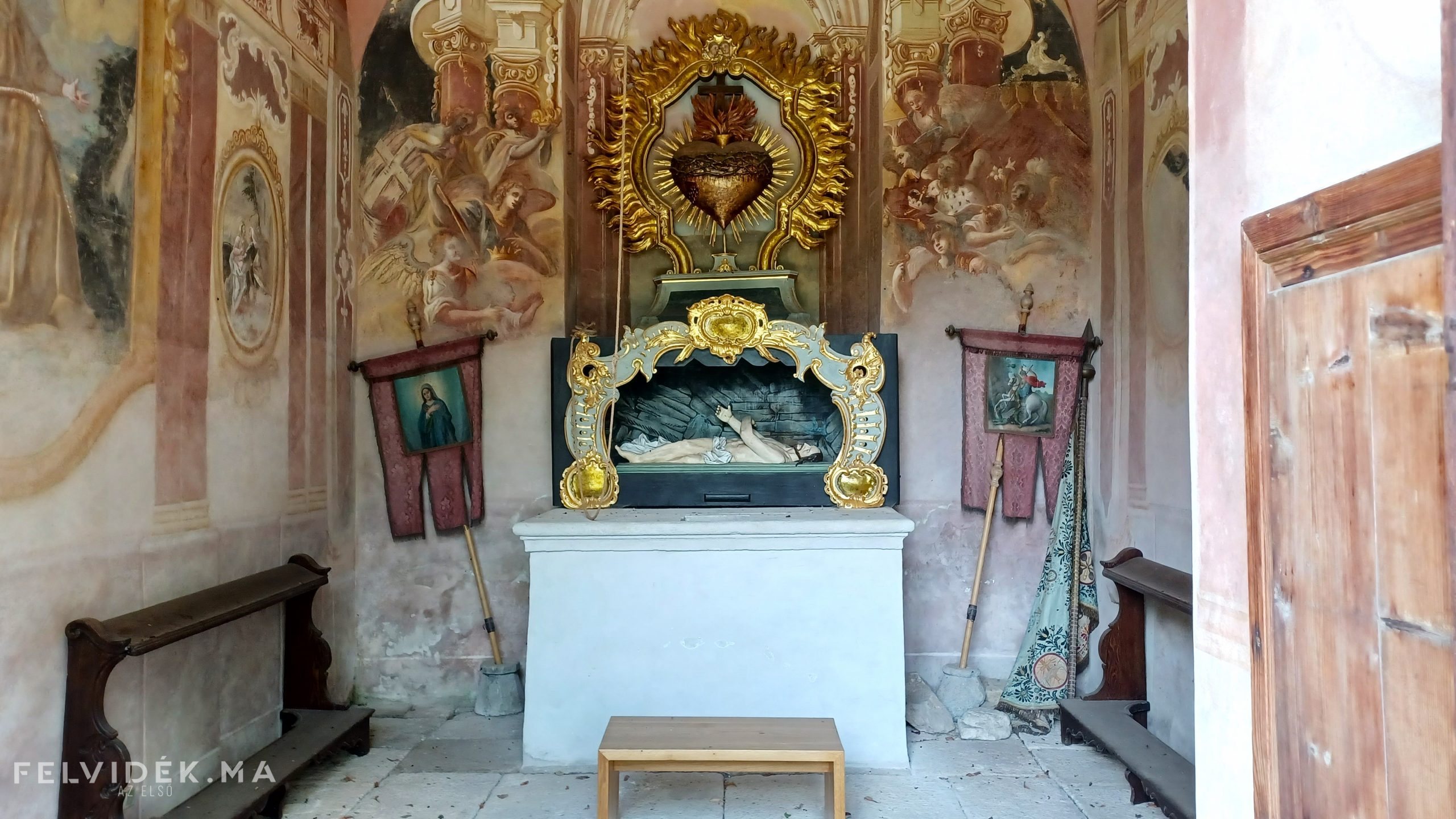
Until the middle of the last century, it was a desirable farewell place. However, in the second half of the century, the building complex gradually began to deteriorate. Vandals stole and destroyed some of Calvary’s artwork. At the turn of the millennium, it gradually began to be renovated. Below, we present the two churches of Calvary in more detail.
As we already wrote, there are two churches on Calvary. The Upper Church, also known as the German Church, was built on top of the hill. At the foot of Calvary, we find the lower church, which is also called the Slovak Church.
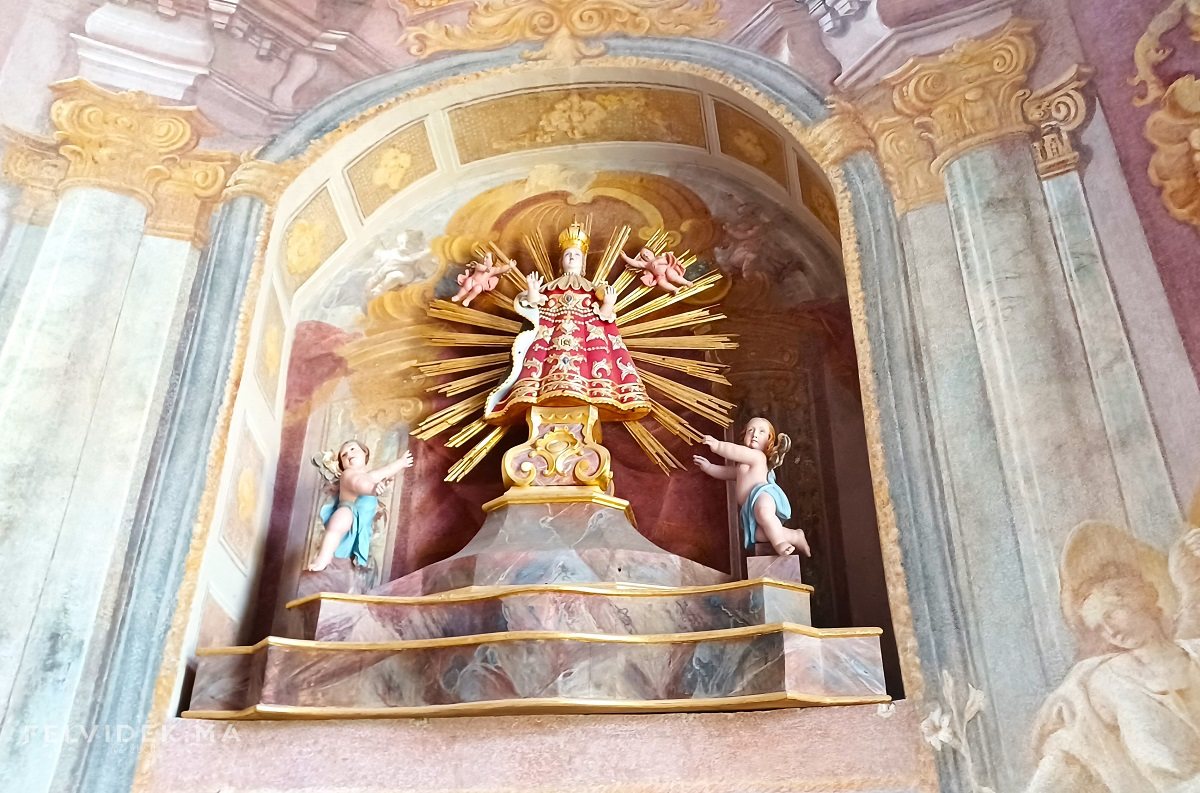
The lower church displays a symbolic portal. The building consists of a central main shrine (the Last Supper) and two side shrines with towers (the Chapel of the Sacred Heart of Jesus and the Chapel of Our Lady of the Sorrowful Heart). While towers are the dominant elements in the secondary sanctuaries, the main sanctuary is decorated with a small dome.
The central element of the Basilica of the Sacred Heart of Jesus to the right of the main sanctuary is the Altar of the Sacred Heart of Jesus. The altar consists of an altar table and an altar table. Finally, there is the Holy Sepulcher, covered with a gilded frame. A statue of the body of Jesus Christ can be seen here. A large gilded heart with a crown of thorns is placed on the wall above the tomb, surrounded by the angels that appear in the frescoes. This is all that remains of the altar. Unfortunately, vandals stole many valuable accessories. Surrounding Baroque frescoes can be seen around the altar.
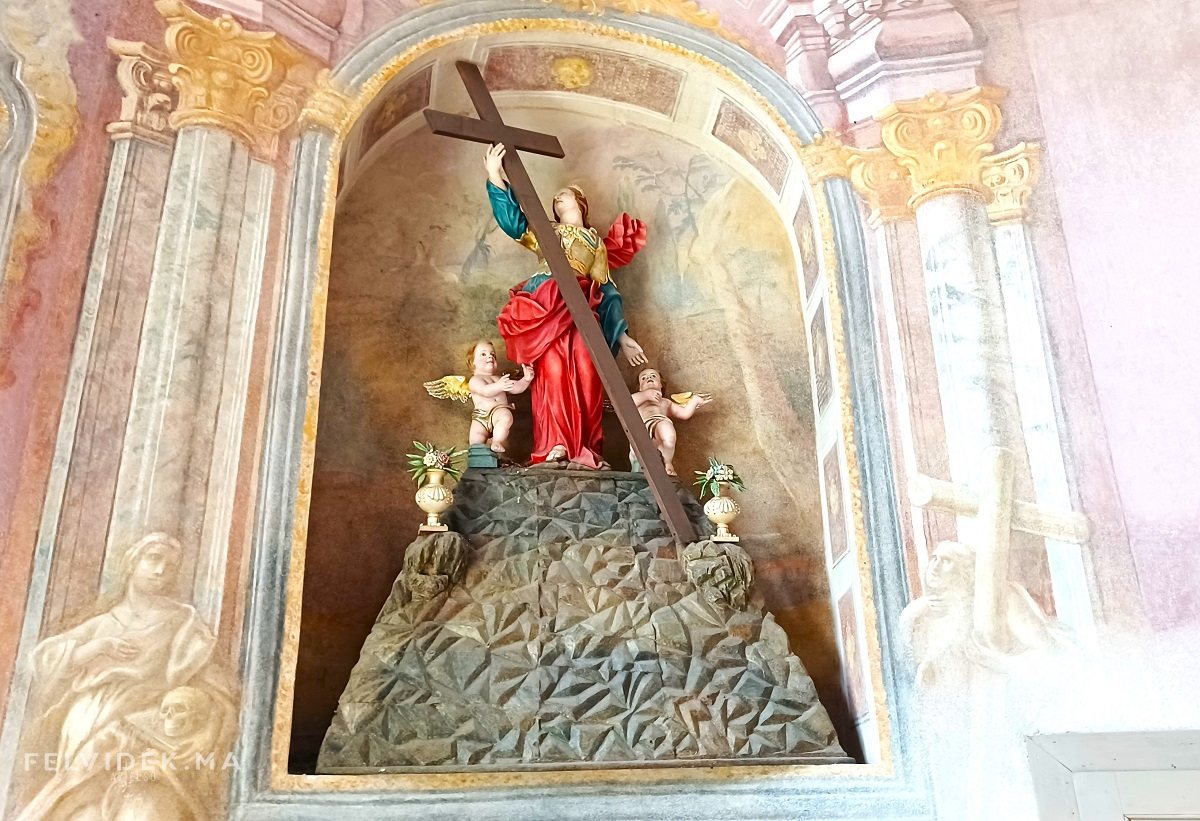
The main shrine commemorates the Last Supper. The bas-relief of the main altar in the circular-plan church depicts the aforementioned Last Supper. Similar to the previous church, the walls here are also decorated with 3D frescoes. On both sides of the main sanctuary, a wall niche was created. On the left is Saint Helena with the cross, and on the right is the statuette of Jesus in Prague.
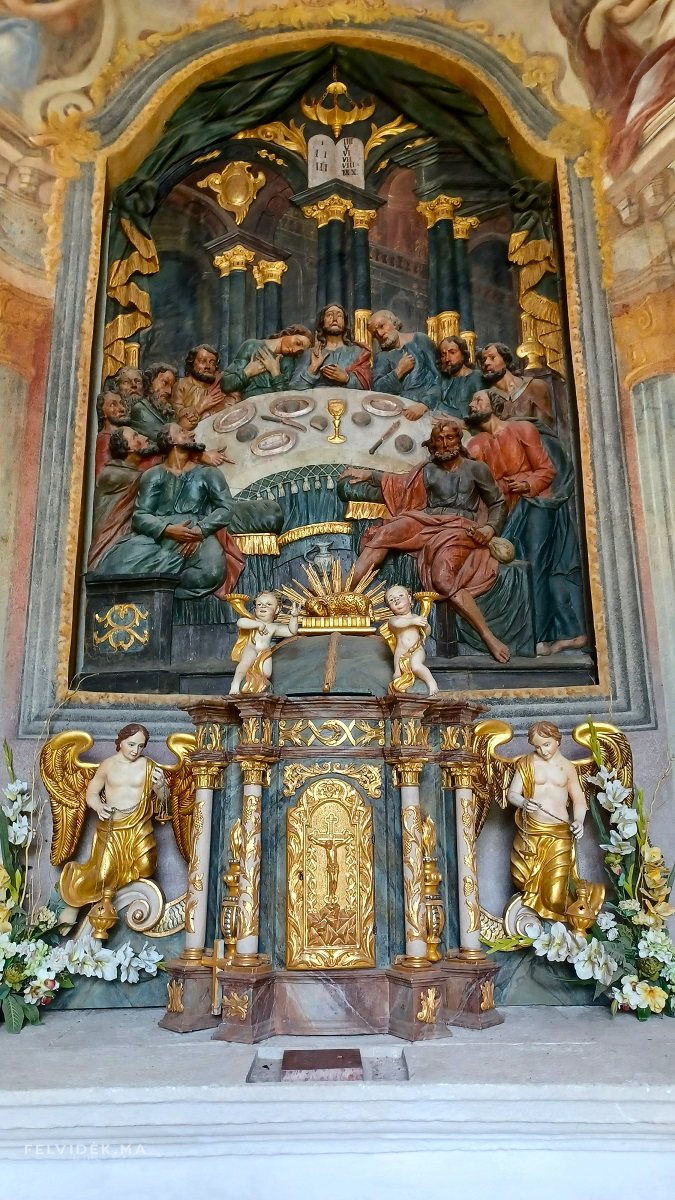
The second side sanctuary is the Church of Our Lady of the Sorrowful Heart. Only the torso of the church’s original statue depicting the Pietà remains. The altar table, canopy and symbolic grotto are shown. Unfortunately, the statues of the central group of statues, which are the Virgin Mary embracing the dead body of Jesus, and Mary Magdalene, have not survived. On the walls here you can also see 3D murals. Above the altar is a column capital, and on the side walls an arched representation can be observed.
The pinnacle of Calvary’s content and formation is the High Church.
The entrance gate is surrounded by columns. On the stone pedestal on the left is a statue of Moses holding the Ten Commandments and a huge staff. The statue of Abraham originally stood on the stone plinth on the right.
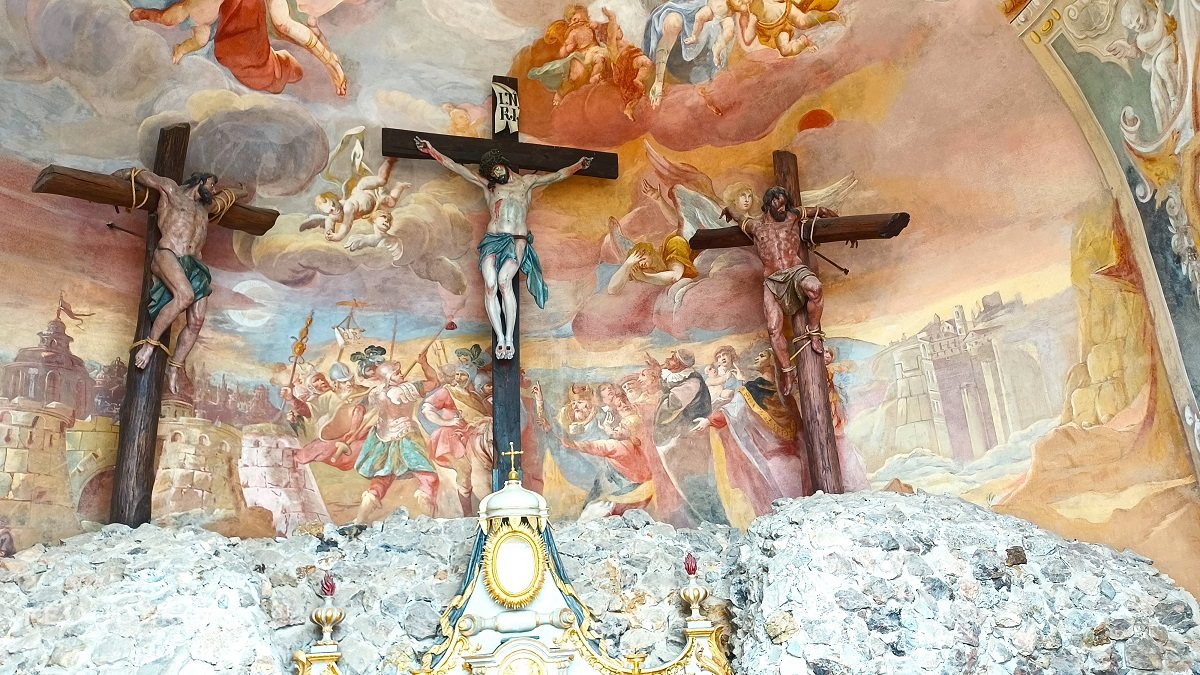
The main motif of the upper church is the crucifixion scene, which is located on a hill built of rough stones. The life-sized statues depict Jesus and the two united men. The background of the scene is provided by the landscape of Jerusalem and Selmecbánya. On both sides of the interior of the church, within a three-dimensional frame, you can see a depiction of the events that followed the crucifixion (the taking down from the cross, the burial of the body, and the resurrection of Christ from the dead).
There were three statues originally visible at the base of the rough stone hill. Statues of the Virgin Mary, Mary Magdalene and Saint John the Baptist were stolen. Paper figures represent their place.
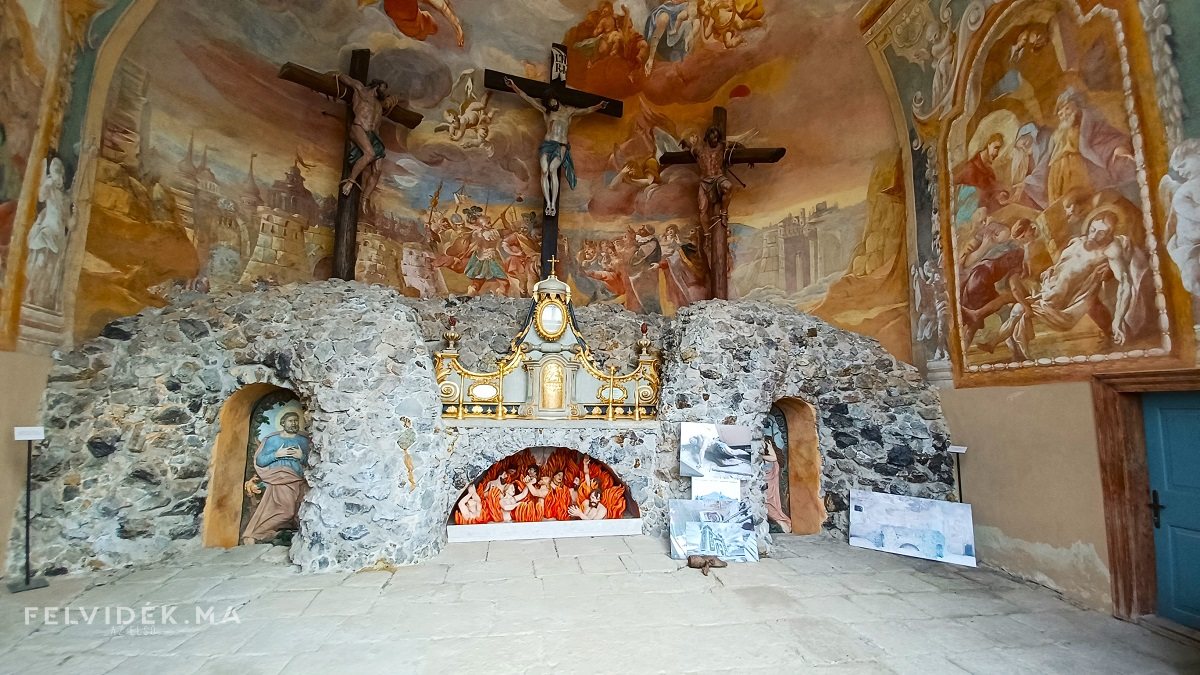
As you can see, the sacred place rich in works of art has been saved from complete destruction.
With effective cooperation and support, Calvary gradually becomes more beautiful.
It’s worth a visit to Selmecbánya, and if you’re there, climbing the Scharffenberg is a must. The upper church offers a wonderful view of the mining town and its surroundings.
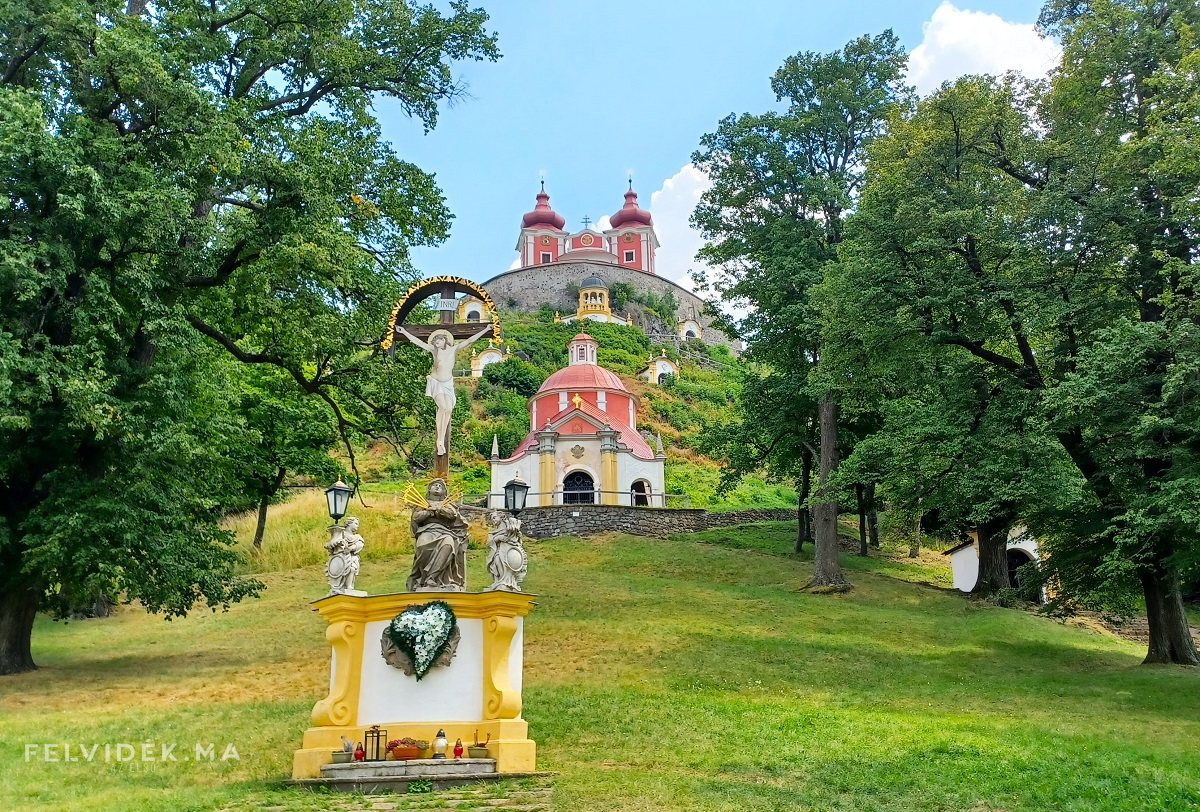
Additional recordings of the Calvary at Selmecbánya are below They can be viewed in our photo report.
source:
K. Voshkova: A Farewell Guide to Selmekbani’s Golgotha
(Peter Pastor/Felvidék.ma)








































